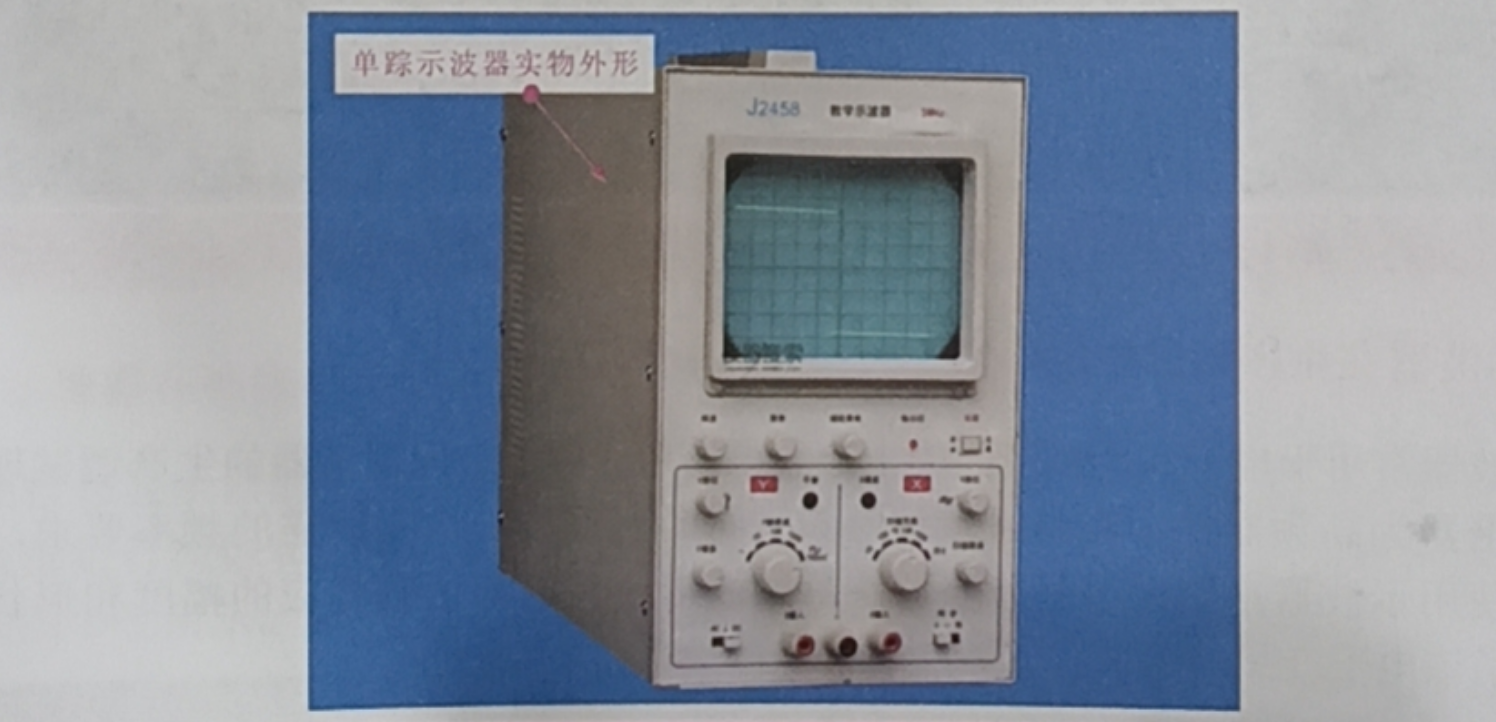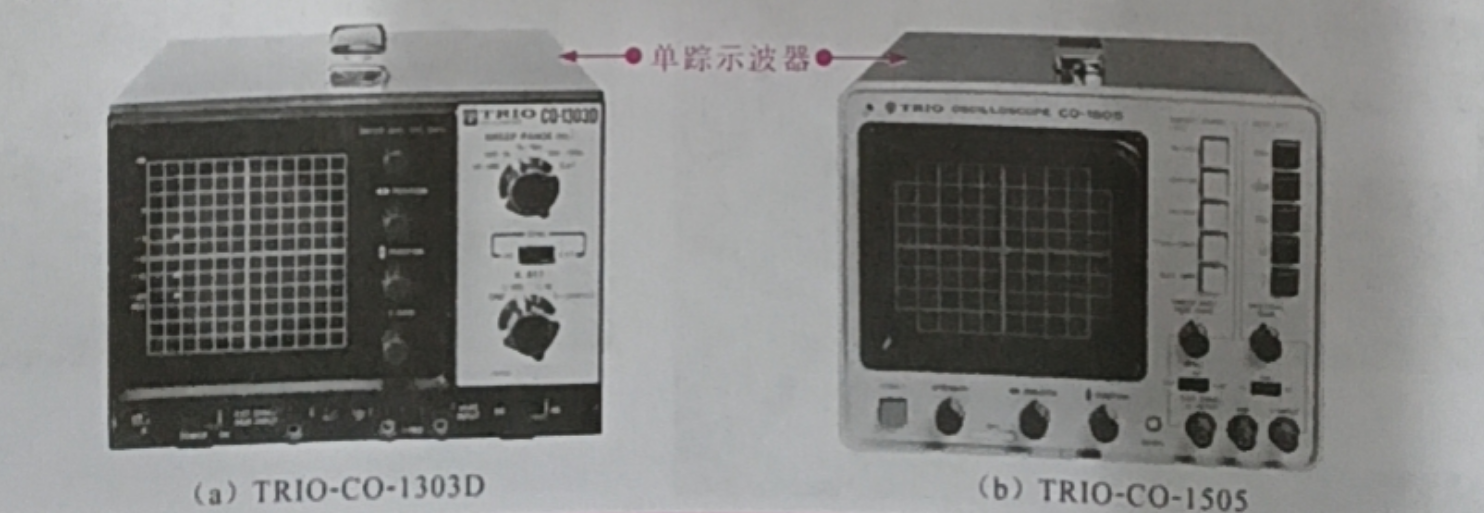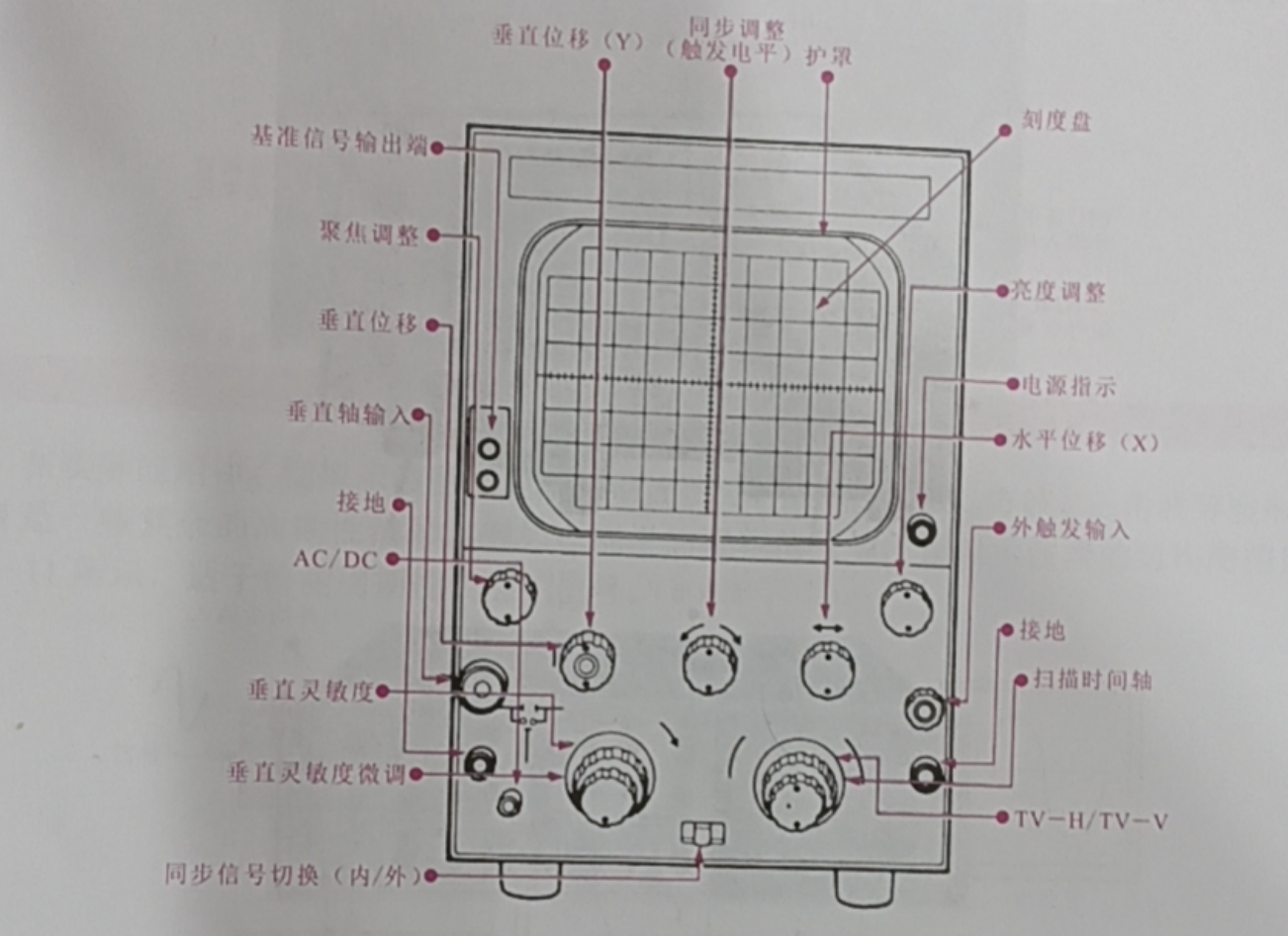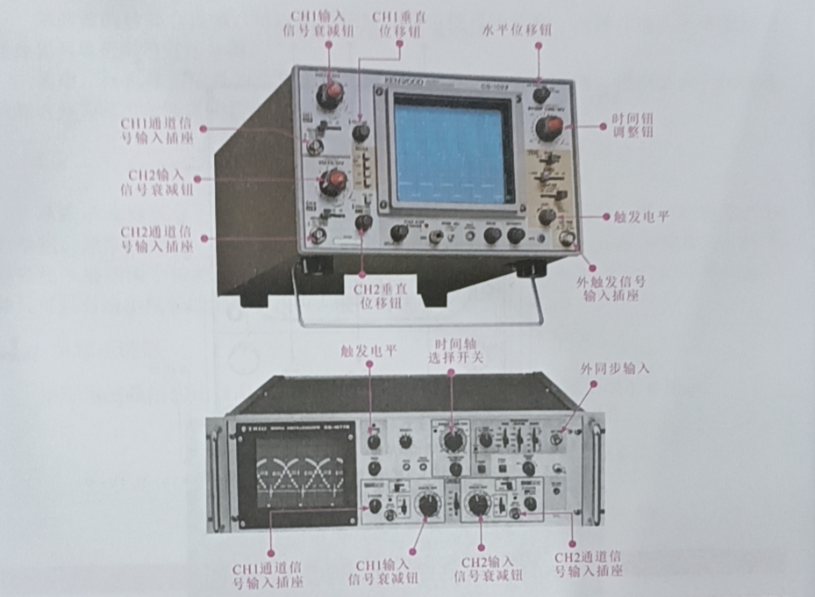Types of oscilloscope characteristics-single trace oscilloscope (knowledge)
Types of oscilloscope features
There are many types of oscilloscopes, which can be classified according to the number of signals displayed by the oscilloscope, the measurement function, the display device of the waveform and the measurement range. Among them, according to the number of displayed signals to be divided into single-trace oscilloscope, double-trace oscilloscope; according to the measurement function of the oscilloscope can be divided into analog oscilloscope and digital oscilloscope.
Single-trace oscilloscope and double-trace oscilloscope
Single trace oscilloscope has only one signal input, only one signal can be displayed on the screen, it can only detect the shape, frequency and period of the waveform, and can not compare two signals or three signals; double trace oscilloscope has two signal inputs and two channels to detect the signal, can display two different signal waveforms on the display, and the frequency, phase, waveform, etc. of the two signals can be compared. comparison.
Single-trace oscilloscope
Single trace oscilloscope structure is relatively simple, the function is relatively less, its physical appearance as shown in the figure.

Single trace oscilloscope button is less, easier to use, there are many varieties of common models, Figure 1-7 shows two of them.

The typical structure of a single-trace oscilloscope, whose maximum display frequency is 7MHz, can be used in general audio equipment and color television overhaul, which has a relatively small oscilloscope tube and is relatively stable.

Tip Description
In the single-trace oscilloscope, the brightness knob is used to adjust the brightness of the displayed waveform; the focus button can adjust the waveform to the best focus state. Marked with (+, -) pole is the polarity switch button, the normal state is positive polarity, press down is negative polarity, generally in the inspection of television signals are more commonly used, while the detection of general sine signals and pulse signals is not necessary to consider the signal polarity.
There are three buttons below the oscilloscope, including the button marked with Y displacement indicates the waveform displacement in the vertical direction, the button marked with X displacement indicates the waveform displacement in the horizontal direction, the button marked with synchronization is used to adjust the synchronization of the signal, when the displayed waveform is not synchronized, adjust this button to synchronize the waveform, otherwise it is not easy to see the waveform clearly. The range of voltage attenuation block of single trace oscilloscope is from minimum 10mV block to maximum 30V block, if you use 1:10 reduction head, the measurement range can be expanded 10 times to 300V or higher.
The period of the single-trace oscilloscope period button is from 10ms to 0.3s, which is a wide range. The oscilloscope has an X-axis input channel and its corresponding Y-axis input channel on the left. These two buttons can simultaneously observe the composite waveform of X-axis and Y-axis input signals. In addition, measurement of AC signals and DC signals also have corresponding buttons, such as measurement of DC signals will DC button down; measurement of AC signals will be its button popped out.
Dual-trace oscilloscope
Double trace oscilloscope with two signal inputs, you can simultaneously display two different signal waveforms on the display and can compare the frequency, phase, waveform, etc. of the two signals.
Typical dual-trace oscilloscope shape structure, it is mainly composed of two signal inputs, various adjustment knobs, display, external light and other parts. (The following figure: the shape structure of the dual-trace oscilloscope)

Tip Description:
The frequency range of double-trace oscilloscope is 0~ 20MHZ, 0~40MH and other specifications, which are used in home appliance repair according to the need. In the TV, VCR, the brightness signal processed by the frequency range is 0 ~ 6MHz, the frequency range of the chromaticity signal is 4.43 ~ 4.93MH2, and the frequency of the accompanying sound signal in the following 20kHz, while the high frequency oscilloscope can detect audio signals, video signals, but also about 20MHz some clock oscillation signal and part of the frequency is a little higher Signal, in actual use, such as detection of VCR, color TV internal circuit, their frequency is mostly below 10MHz, generally can use 20MHz oscilloscope for maintenance.
But these oscilloscopes can not detect the color TV's RF signal, because the TV's RF signal frequency is above 40MHz, and the signal strength is small, it is not appropriate to detect with an oscilloscope. It is worth stating that the TV's RF signal is generally not measured with an oscilloscope either. In the work of repairing the cable TV set system, the main use of field strength meter or spectrum analyzer to detect the RF signal.
Types of oscilloscope features
There are many types of oscilloscopes, which can be classified according to the number of signals displayed by the oscilloscope, the measurement function, the display device of the waveform and the measurement range. Among them, according to the number of displayed signals to be divided into single-trace oscilloscope, double-trace oscilloscope; according to the measurement function of the oscilloscope can be divided into analog oscilloscope and digital oscilloscope.
Single-trace oscilloscope and double-trace oscilloscope
Single trace oscilloscope has only one signal input, only one signal can be displayed on the screen, it can only detect the shape, frequency and period of the waveform, and can not compare two signals or three signals; double trace oscilloscope has two signal inputs and two channels to detect the signal, can display two different signal waveforms on the display, and the frequency, phase, waveform, etc. of the two signals can be compared. comparison.
Single-trace oscilloscope
Single trace oscilloscope structure is relatively simple, the function is relatively less, its physical appearance as shown in the figure.

Single trace oscilloscope button is less, easier to use, there are many varieties of common models, Figure 1-7 shows two of them.

The typical structure of a single-trace oscilloscope, whose maximum display frequency is 7MHz, can be used in general audio equipment and color television overhaul, which has a relatively small oscilloscope tube and is relatively stable.

Tip Description
In the single-trace oscilloscope, the brightness knob is used to adjust the brightness of the displayed waveform; the focus button can adjust the waveform to the best focus state. Marked with (+, -) pole is the polarity switch button, the normal state is positive polarity, press down is negative polarity, generally in the inspection of television signals are more commonly used, while the detection of general sine signals and pulse signals is not necessary to consider the signal polarity.
There are three buttons below the oscilloscope, including the button marked with Y displacement indicates the waveform displacement in the vertical direction, the button marked with X displacement indicates the waveform displacement in the horizontal direction, the button marked with synchronization is used to adjust the synchronization of the signal, when the displayed waveform is not synchronized, adjust this button to synchronize the waveform, otherwise it is not easy to see the waveform clearly. The range of voltage attenuation block of single trace oscilloscope is from minimum 10mV block to maximum 30V block, if you use 1:10 reduction head, the measurement range can be expanded 10 times to 300V or higher.
The period of the single-trace oscilloscope period button is from 10ms to 0.3s, which is a wide range. The oscilloscope has an X-axis input channel and its corresponding Y-axis input channel on the left. These two buttons can simultaneously observe the composite waveform of X-axis and Y-axis input signals. In addition, measurement of AC signals and DC signals also have corresponding buttons, such as measurement of DC signals will DC button down; measurement of AC signals will be its button popped out.
Dual-trace oscilloscope
Double trace oscilloscope with two signal inputs, you can simultaneously display two different signal waveforms on the display and can compare the frequency, phase, waveform, etc. of the two signals.
Typical dual-trace oscilloscope shape structure, it is mainly composed of two signal inputs, various adjustment knobs, display, external light and other parts. (The following figure: the shape structure of the dual-trace oscilloscope)

Tip Description:
The frequency range of double-trace oscilloscope is 0~ 20MHZ, 0~40MH and other specifications, which are used in home appliance repair according to the need. In the TV, VCR, the brightness signal processed by the frequency range is 0 ~ 6MHz, the frequency range of the chromaticity signal is 4.43 ~ 4.93MH2, and the frequency of the accompanying sound signal in the following 20kHz, while the high frequency oscilloscope can detect audio signals, video signals, but also about 20MHz some clock oscillation signal and part of the frequency is a little higher Signal, in actual use, such as detection of VCR, color TV internal circuit, their frequency is mostly below 10MHz, generally can use 20MHz oscilloscope for maintenance.
But these oscilloscopes can not detect the color TV's RF signal, because the TV's RF signal frequency is above 40MHz, and the signal strength is small, it is not appropriate to detect with an oscilloscope. It is worth stating that the TV's RF signal is generally not measured with an oscilloscope either. In the work of repairing the cable TV set system, the main use of field strength meter or spectrum analyzer to detect the RF signal.







